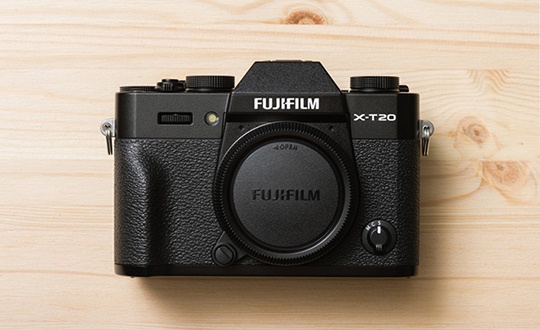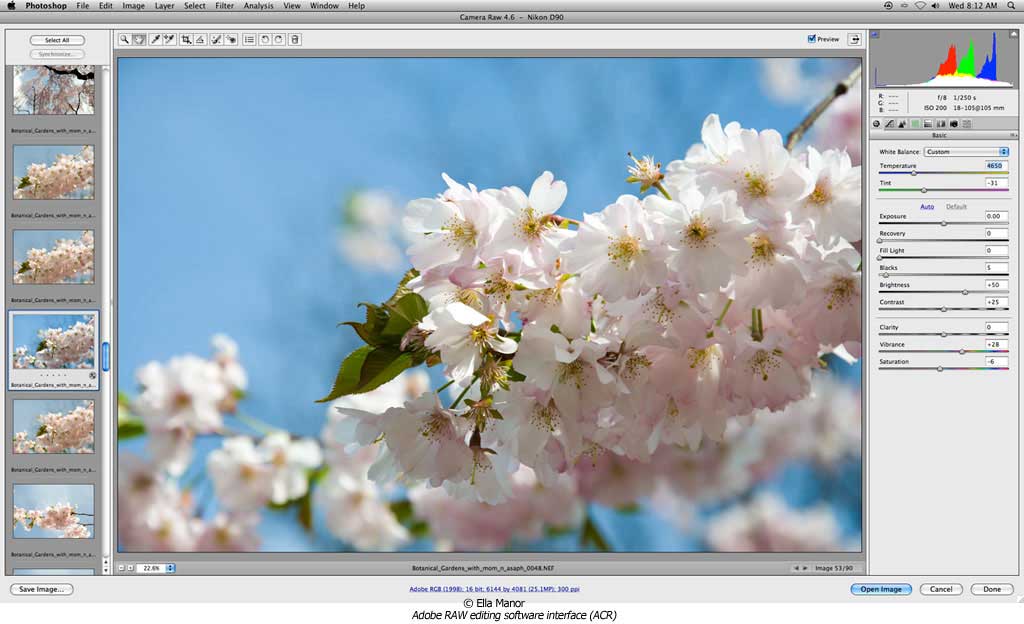Dynamic range is a term often thrown out by manufacturers of digital cameras, scanners, and even film. We typically hear claims, sometimes exaggerated, of great improvements in a particular product. But what is the reality? For that matter, what exactly is dynamic range and why does it matter to photographers?
Essentially, dynamic range (DR) refers to the range of luminance values, from the brightest to the darkest, that any device can capture. But light-sensitive materials, whether film or digital sensors, have a problem when faced with high-contrast subjects. They have a limited ability to record such subjects. Human vision, on the other hand, has a tremendous range that is quite adjustable, enabling us to see detail in the brightest sunlit snow to the darkest night scene, though not at the same time. Still, the human eye can record a far higher contrast range than any film or digital sensor, even if we don't factor in dark or light adaptation. As a result, photographers have learned to "see" like the camera. In other words, work within the limitations those photographic tools impose on us.
Let's begin by examining film, both negative and reversal (slide) types. That old mainstay of photojournalists past, Kodak Tri-X, is perhaps still the champ when it comes to photographing high-contrast scenes. The traditional "wet" darkroom, of course, extended the possibilities, but even without common techniques like "dodging" the shadows and "burning in" the highlights, Tri-X excelled.
Color negative film has a narrower range but still quite good, especially if you factor in darkroom technique (does anyone have a color darkroom anymore)? Reversal film, on the other hand, is another story. Exposure latitude of perhaps one stop under and one-half stop over is often cited. But I have always maintained that it is pointless to think in terms of latitude when using this type of film. Especially if you define latitude as the film's ability to cover exposure errors. Reversal film has NO such ability. Rather, think in terms of a narrow range of "acceptable" densities. However, typically there is only one density that is really correct; the others will be either a little too light or a little too dark. As for high-contrast subjects with this film, forget it. The classic approach has always been to base your exposure around the highlights and let the shadows fall where they may. You thus avoid blown highlights but there may be enough detail in the shadows to capture with other tools. And this brings me to digital.
Scanners are digital too, having sensors similar to cameras, and you can thus convert those slides (negatives too) to digital files. The better models include such features as multi-sampling, color correction, curve adjustment, amongst others. For high-contrast images, you can do separate scans for the highlights, mid-tones, and shadows, then combine them in Photoshop.
For most people, of course, digital means digital cameras. But before I discuss those, I want to briefly mention what might be considered the weak link in all this — prints. Photographic paper (this goes for both the kind used in a darkroom as well as inkjet) does not have the range of film. The aforementioned dodging and burning-in techniques were developed precisely because of this limitation. Photoshop gives us modern equivalents (my favorite is the Shadow/Highlight tool in CS2). Glossy paper surfaces provide more "apparent" range than matte types, in terms of both highlights and shadows, but that's mostly an optical illusion. Also, lot depends on the ink being used. In any event, a certain degree of compression is inevitable whenever you make a print, regardless of what the dynamic range of the capture medium was. Especially if dodging and/or burning is employed.
Let's not forget computer monitors. Cheap ones feature a dynamic range of 100:1 on average (professional models might go as high as 1000:1). That's about the best that paper can do though 250:1 is at least theoretically possible. Those are the ratios I've seen quoted in various publications. However, there are no absolute values here and anyway, such ratios are difficult to translate into useful figures. Ask three different people what the DR of any capture medium is and you will get three different answers.
But what about digital cameras? That's what most folks are using nowadays. Here the subject gets a little murky. In general, DSLR's have a wider dynamic range than the consumer type. Part of the reason is because the former have larger pixels on their sensors and that means a greater ability to record both highlight and shadow detail, without "clipping" either of those. But you can take maximum advantage of any camera's inherent DR, even a point-and-shoot, by shooting RAW. JPEG capture inevitably "clips" some data as part of the in-camera compression process while RAW retains everything the sensor records. You may not see a true picture of this on the camera's histogram, however, because the histogram is a kind of JPEG preview, though models equipped with RGB histograms will show more. But that "hidden" information can be brought out in post-processing.


Ok, let's look at some "problem" images and possible solutions. Figure-1 shows an uncorrected image from the original RAW capture. It's a typical high-contrast scene, with overexposed highlights in part of the scarecrow mask and deep dark shadows behind. For the fix, I employed several techniques (Figure-2). First, I lightened the overall shadows about 40% with the Shadow/Highlight tool in Photoshop CS2 and darkened the overall highlights about 5%. But some of the highlights in the scarecrow mask were completely devoid of detail (this image was shot with a point-and-shoot; a DSLR would have done better) so I simply cloned in detail from other parts of the mask. Lightening the shadows cut down on the harsh contrast and made some of the detail in the scarecrow's "arms" visible.
This illustrates an important point about digital capture. Detail in dark shadows can usually be recovered, though you may have visible noise in those areas. But blown highlights are gone forever. Does this mean you should routinely underexpose your digital images? No. I think the best approach is still to base your exposure around the highlights and midtones. This is why people have said that digital capture is like shooting transparency film.
 Speaking of film, here's a sunset scene (Figure-3) I shot on Kodak Kodachrome many years ago. As you can see, the exposure was essentially based on the sky. Prints from the original TIF file do show some detail in the fallen tree in the foreground (viewing the slide projected on a screen shows even more) but I think it works well as a silhouette, even here. A graduated filter might have helped capture more foreground detail.
Speaking of film, here's a sunset scene (Figure-3) I shot on Kodak Kodachrome many years ago. As you can see, the exposure was essentially based on the sky. Prints from the original TIF file do show some detail in the fallen tree in the foreground (viewing the slide projected on a screen shows even more) but I think it works well as a silhouette, even here. A graduated filter might have helped capture more foreground detail.
Digital camera manufacturers often tout the wide dynamic range they claim for their products but it's not all hype. Modern DSLR's typically can capture up to eight stops. Sounds great but the reality is that much of the far-end shadow detail will be obscured by excessive noise, even at low ISO settings. Most knowledgeable photographers are more interested in the highlight range before clipping occurs and in that, DSLR's perform quite well.
Digital camera reviewers are beginning to post dynamic range test data on their sites and that might be somewhat useful in comparing one camera with another. My test method is to take my own memory card into the retailer, take some high-contrast photos in the store with the camera I am considering, then examine the images later in my studio. Not scientific but I think it gives me a better "real world" basis for choosing a particular model.
Are there any ways to extend dynamic range other than what I have mentioned? Yes. Perhaps you have already seen articles about the latest rage – HDR. That's the subject of Part Two of this article.






